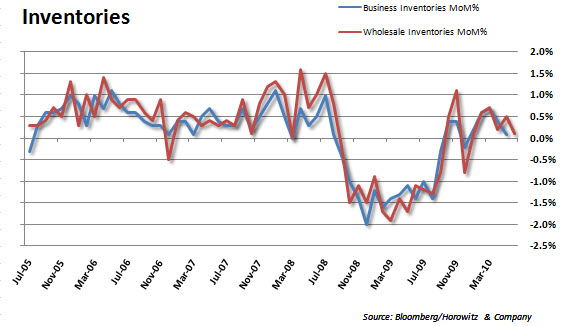While it is a good to see that wholesale inventories are dropping, it is not for the right reasons. What an economy looks for is a combination of manufacturing and sales. If sales are high, there is the potential to see a strain on inventories and reports to show a drop at the business and wholesale levels.
But, if sales are lackluster, there should be a rising level. Yet, in this case, sales are low and inventories are going lower as well, signifying that retailers and businesses are not replenishing stock. The reason? There is a slowdown occurring and no one wants to get caught again holding the bag.
The last time inventories rose when sales were soft provided for a terrible result. Prices were slashed and retailers entered into a time of panic. That was the beginning of the consumer shutdown that hobbled businesses worldwide. Now it could be signaling a similar situation that is the beginning of the end in the inventory restocking cycle that has boosted the word’s manufacturing capacity over the past 18 months.
From Briefing.com:
Wholesale Inventories Grow as Sales Tumble
Merchant wholesale inventories increased 0.1% in June, down from 0.5% growth in May. The Briefing.com consensus forecast called for wholesaler inventories to increase 0.4%.
Much of the data were already estimated in the Q2 GDP report.
The lack of inventory growth is a little disconcerting when coupled with the 0.7% decline in May’s wholesale sales. Wholesalers have stopped purchasing new inventories and the upward trend is only developing because sales are weakening.
The lack of inventory growth may signal that wholesalers anticipate further reductions in demand over the coming months. The details of the data confirm this.
Just about every sector that saw negative sales growth also saw positive inventory gains. Likewise, most sectors that reported strong sales also reported inventory losses.

















